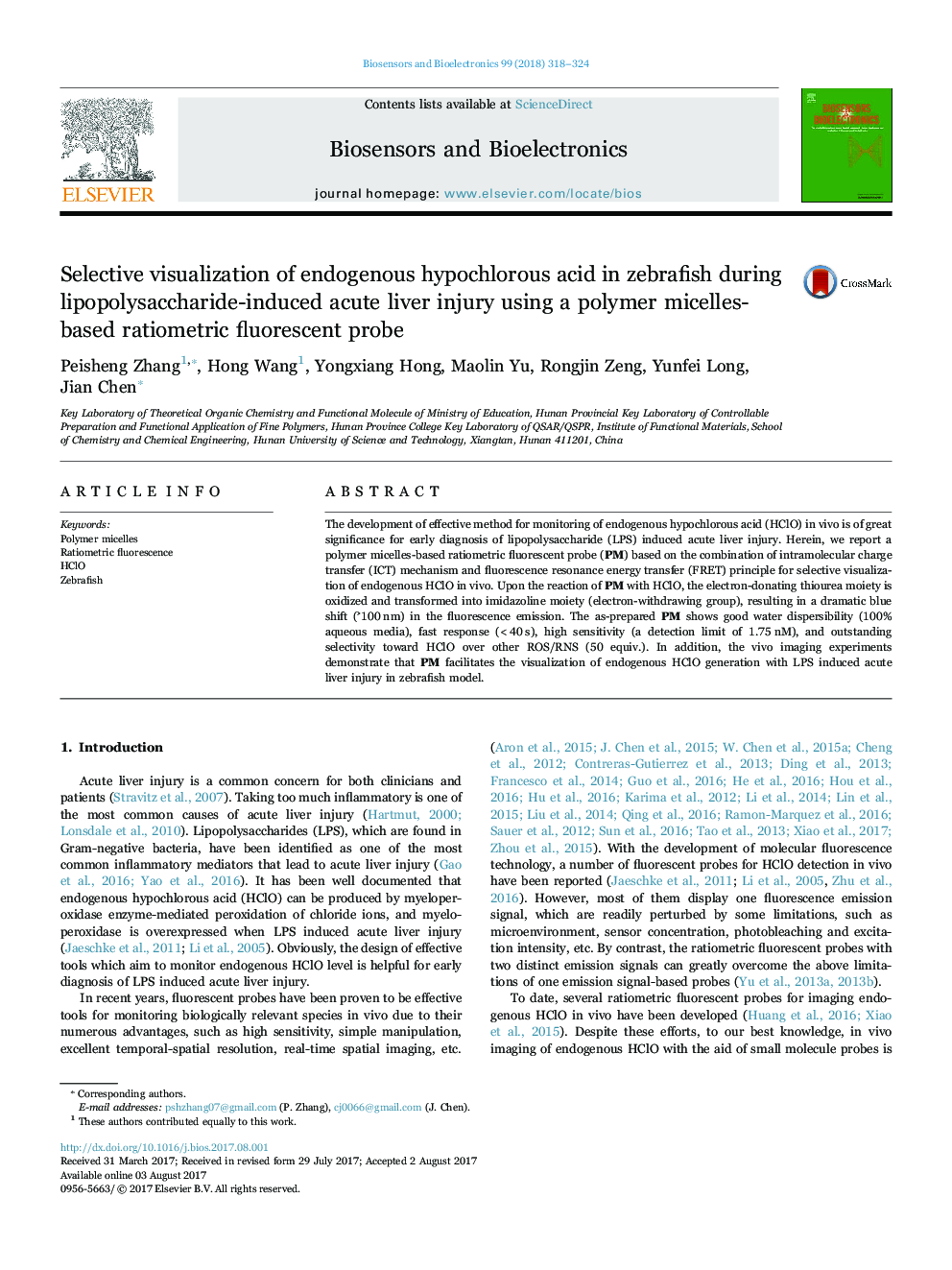| Article ID | Journal | Published Year | Pages | File Type |
|---|---|---|---|---|
| 5031345 | Biosensors and Bioelectronics | 2018 | 7 Pages |
â¢A polymer micelles-based probe for ratiometric HClO detection was developed.â¢The probe exhibits fast response, high sensitivity and outstanding selectivity.â¢The probe can be used for detecting LPS-induced acute liver injury in zebrafish.
The development of effective method for monitoring of endogenous hypochlorous acid (HClO) in vivo is of great significance for early diagnosis of lipopolysaccharide (LPS) induced acute liver injury. Herein, we report a polymer micelles-based ratiometric fluorescent probe (PM) based on the combination of intramolecular charge transfer (ICT) mechanism and fluorescence resonance energy transfer (FRET) principle for selective visualization of endogenous HClO in vivo. Upon the reaction of PM with HClO, the electron-donating thiourea moiety is oxidized and transformed into imidazoline moiety (electron-withdrawing group), resulting in a dramatic blue shift (Ë100Â nm) in the fluorescence emission. The as-prepared PM shows good water dispersibility (100% aqueous media), fast response (<40Â s), high sensitivity (a detection limit of 1.75Â nM), and outstanding selectivity toward HClO over other ROS/RNS (50 equiv.). In addition, the vivo imaging experiments demonstrate that PM facilitates the visualization of endogenous HClO generation with LPS induced acute liver injury in zebrafish model.
